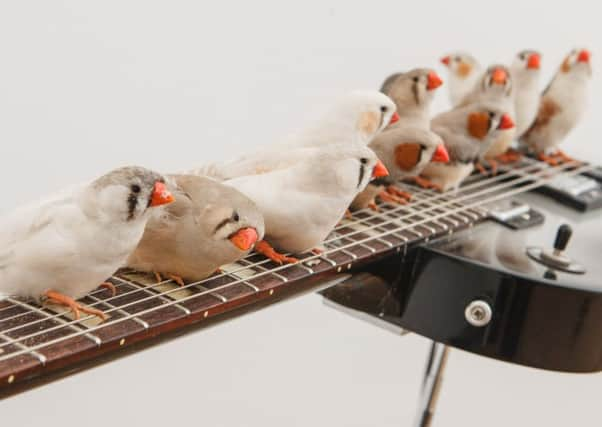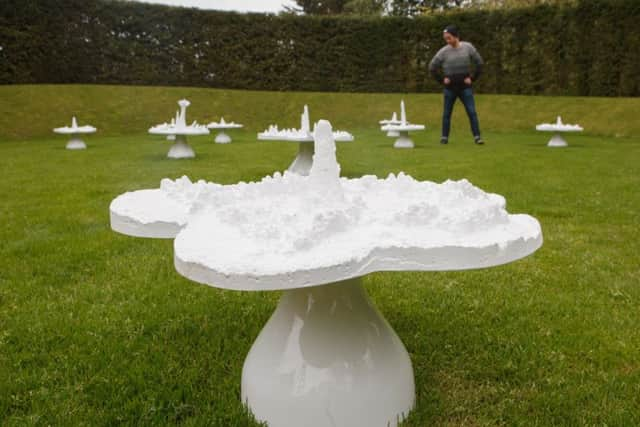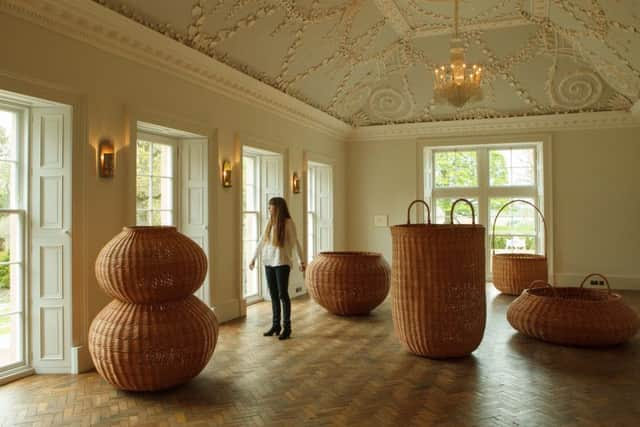The rise of Jupiter Artland on Scotland's art landscape


On Wednesday 6 July, at London’s Natural History Museum, Robert Wilson will take part in a public debate about what makes a great museum today. In the evening, at a prize-giving dinner in the same venue, he and his wife Nicky will hear, from the Duchess of Cambridge no less, whether the judges of the annual Museum of the Year agree with his vision to the tune of investing the £100,000 Art Fund Prize in it.
Jupiter Artland, a private sculpture park at Bonnington House, a Jacobean house, nestling half an hour from central Edinburgh on an unpromising edge of West Lothian, might seem an unlikely nominee for Museum of the Year. Nicky Wilson first dreamed up the sculpture park when nursing the youngest of her children whilst her husband commuted to London where he is chairman of the family business Nelsons, whose interests include homeopathic remedies.
Advertisement
Hide AdAdvertisement
Hide AdThe fine house and 100 acre estate, which the couple bought in 1999, is attractive but hardly bucolic, the everyday infrastructure of central Scotland such as the M8 and Edinburgh Airport are within easy reach. Yet such is the force of the Wilson’s vision that the place is now synonymous with a lush contemplative retreat for contemporary art, with art works specially commissioned for the landscape from artists such as Anish Kapoor, Andy Goldsworthy and Nathan Coley. The estate now boasts everything from a lake and boathouse created by the artist Tania Kovats to a jewelled amethyst grotto created by Anya Gallacio. This experience is not only available to the public in real life but, thanks to a partnership with Napier University, you can visit from any location using a digital app and even find Jupiter Artland on Minecraft.


The Wilsons are in the running for one of the most prestigious gongs in the museum and gallery sector. The four other nominees are The Arnolfini in Bristol, Bethlem Museum of the Mind in London, York Museum and one of the greatest public museums in the world, the Victoria and Albert. The latter was founded in 1852, boasts almost 4 million visitors a year, and is the custodian of 2.3 million objects. In contrast Jupiter, a private collection administered by a charitable and educational trust, boasts just 30.
So when I meet three of the judges, plus their chair, the director of the Art Fund charity Stephen Deuchar, in Scotland on their judging tour, I have plenty of questions. For a start, is Jupiter Artland, actually a museum? Gus Casely-Hayford art historian and TV presenter, laughs: “Well, we use museum in the widest generic sense.” The prize has long recognised art galleries, but surely a museum is the kind of place based on scholarship and vast archives? “It’s a living museum,” says the artist Cornelia Parker, “It will accrue that weight and that kind of archive.” Parker has been open about her connections with Nicky Wilson whom she tutored many years ago when Wilson was a sculpture student at Camberwell and Chelsea art schools. Parker is responsible for one of Jupiter’s most spectacular events, a firework display resembling a meteor shower in May 2009.
But how do you compare a collection of site specific art works, with a huge encyclopaedic collection like the V&A? Stephen Deuchar says, “The thing they have in common is that they have a curatorial hand behind them. People think of museums as being about the collections but they are actually about people: the people who work there and who marshall the material and make relationships with artists.”
Advertisement
Hide AdAdvertisement
Hide Ad“I didn’t hear from her for many years,” says Cornelia Parker of Nicky Wilson, “and then she phoned out of the blue, she told me she was setting up a sculpture park, that she had had four children but that her passion for art hadn’t abated and she really wanted to be immersed in that world. I was quite sceptical. But I came up and visited, and I was so impressed. To make large site specific work as an artist is usually quite tortuous, there are so many boxes you have to tick. Whereas here, they were saying we want you to respond to the landscape and whatever you want to do we will support you. Which is a very rare thing.”


Will Gompertz the BBC Arts Correspondent, who is also part of the judging team, has been called to another job, although I am assured that he will make a solo visit. Judge Professor Ludmilla Jordanova, describes Jupiter as “fascinating and inspiring”. Asked if there is a distinction between the Wilsons’ vision and traditional support of the arts by wealthy patrons, she says: “I don’t think patronage is a dirty word and I think we should really cherish people who are wealthy and want to give something to communities.”
Stephen Deuchar says: “What I think is very impressive here is that social agenda. It’s about doing the best for art and artists, but it’s also about doing the very best for visitors who experience it. There are very specific targets in relation to less privileged groups and schoolchildren, it’s not just window dressing.”
Whatever happens on Wednesday, the Wilsons ascendancy in the arts looks pretty assured. But their ambitions for Jupiter know no bounds. They hope that every Scottish school child will get a chance to embark on a digital visit, having calculated that they have so far reached 6 per cent of them. If they won, the Jupiter team would invest some money in their digital ambitions but mainly focus on expanding their education facilities. Last year 10,000 people took part in education schemes targeted at schoolchildren and partnerships with charities supporting adults with dementia and Alzheimer’s.
Advertisement
Hide AdAdvertisement
Hide AdBut whatever the outcome for Jupiter Artland, the nomination has already changed things. Visitor figures have already gone up by 47 per cent on the same time last year. “We’ve now understood where we fit in to the cultural offering of Scotland,” says Nicky Wilson. “A question which has been on lots of people’s minds. What we are really proud of is that it might be a new model. In a way we are unexpected, there’s a legitimacy to this way to do it.”